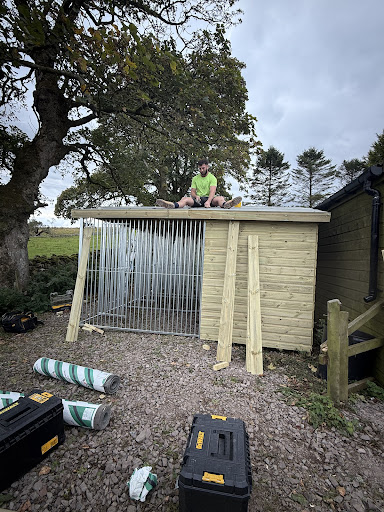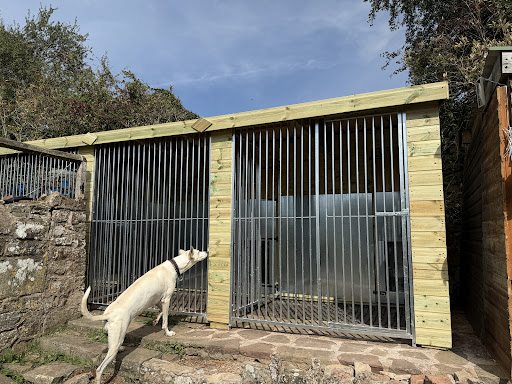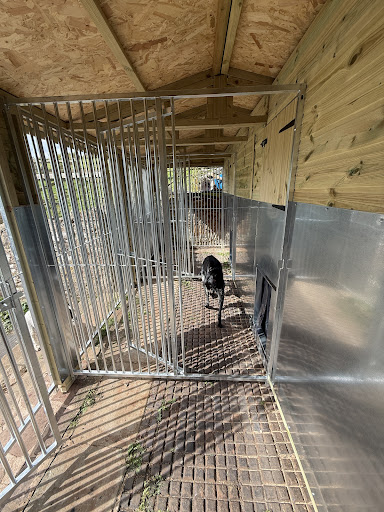If you’ve ever wished your dog could talk, all you have to do is look closer to realise they’re constantly communicating with you. Canines show their emotions through body language, facial expressions, and sounds. Recognising the signals of each feeling will allow you to respond appropriately without misunderstanding their intentions.
Although pups don’t have the same extensive range of emotions as humans, it’s believed they can experience basic feelings, including happiness, fear, anger, stress, and anticipation.
To understand what your pup is trying to tell you, Benchmark Kennels have put together an explanation of common dog behaviour.
Happy behaviour
When dogs are relaxed and happy around you, it often means they trust, love, and feel comfortable with you.
You can rest assured knowing your pup is content if they display the following signs:
- holding their tail in a neutral position
- sighing and stretching
- soft eyes with relaxed lids
- rolling onto their back to ask for a belly rub
- smooth hair
- holding their ears in the natural position
- distributing weight equally across all paws
- opening mouth slightly, with the corners turned up and tongue exposed
- licking your face
- nudging your nose with their nose

Excitable responses
Dogs are often excited to play and exercise, which is fun for you and the pup, keeps them healthy, and prevents them from having excess energy.
Here are some signs that your dog is excited:
- the play bow (when dogs raise their tail end and bend their front paws to lower their front end)
- pointing ears upwards
- opening their mouth with the tongue exposed
- yappy and high-pitched barking
- full body wagging
- jumping
- fast tail wagging
However, to prevent your dog from becoming constantly over-excited, ensure you keep them physically and mentally stimulated, maintain a consistent routine, and feed them a nutritional diet that suits their breed. Try not to encourage the excited behaviour as it can lead to aggression. If you’re struggling to keep your dog calm, get advice from a professional dog trainer and veterinarian.
Signs of stress
Recognising when your dog is distressed can help you calm them down and prevent aggravating them further.
Here are some indications that your dog is afraid, stressed, or nervous:
- cowering and hunching
- placing their tail between their legs or towards the ground
- avoiding eye contact
- sweating through their pads
- lowering their body
- hanging their head low
- pointing their ears back
- turning their head away from you
- raising hackles
- slightly urinating
- rolling onto their back to show surrender and submission
- trembling

If your dog is nervous, approach them slowly, and avoid looming over them by getting down to their level. Try not to make eye contact with them, as they can consider this a sign of threat. To appear less intimidating, turn to your side and speak in a high-pitched tone.
Don’t push them into situations they aren’t comfortable with, such as interacting with someone new and be patient as they build their confidence.
It’s also important for dogs to have a place where they can be alone and remain undisturbed if they feel stressed, scared, or overwhelmed. Outdoor kennels are a great option for dogs that love being outside. However, ensure they only use it on their terms and never as a form of punishment. Place food, water, toys, and blankets in the kennel, so they associate it with positivity and deem it a safe space.
Angry signals
You must approach an angry dog very carefully to avoid exacerbating the situation. To determine what’s causing the aggression, note down when and how your dog expresses this reaction. This behaviour can stem from many scenarios, such as feeling afraid, territorial, and protective.
Here are some ways your dog may display aggression:
- showing teeth
- fast twitch-like tail wag
- long stares and hard eyes
- standing with a stiffened body posture
- placing their weight forward
- raised hair
- dark and enlarged pupils
- wrinkled nose
- pointing their ears back and down
- snarling and growling
- curled lips
To find the best approach to handle your dog’s anger, remove the stimulus that is causing it or if it happens frequently, consider seeking help from a professional dog trainer. Sudden aggressive behaviour can also be a sign of a medical problem or pain they’re experiencing that can be checked and diagnosed by a veterinarian.
Although some common behaviours can suggest different emotions, you know your pet better than anyone. Try to identify any other ways your dog expresses himself to you, other humans, and other dogs to determine their intentions and make sure you’re ready to react accordingly in the right manner.
Need an outdoor kennel to help your pooch feel calm and safe?
If you want to provide your dog with a safe place to go to for some peace and quiet, an outdoor kennel is a perfect solution. At Benchmark Kennels, we offer a range of secure and spacious kennels that can be customised to suit your dog and home perfectly in terms of size, shape, and material.
You can order a wooden or WPC eco-thermal dog kennel directly from our website today or contact us via phone to find out more about our excellent range of kennels.

























